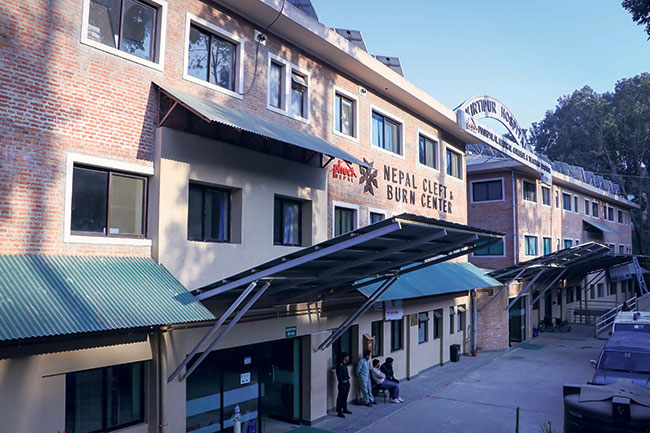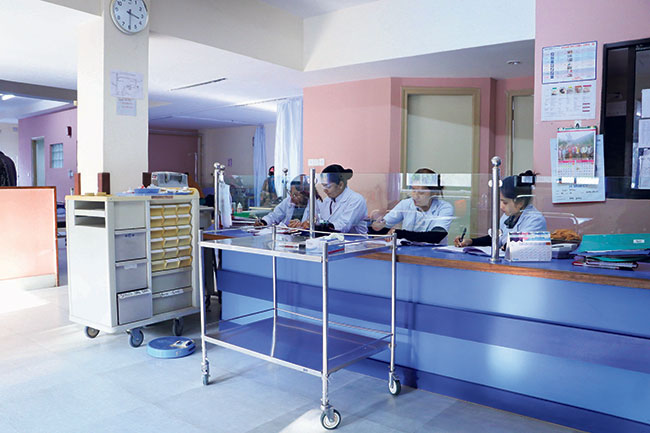KATHMANDU, Dec 19: While most of us are busy complaining about the lack of development in our country, many might not be aware that we have a skin bank in the capital city.
 Phect-Nepal in collaboration with America Nepal Medical Foundation, Stanford University, and ReSurge International had established Nepal’s first skin bank at Kirtipur Hospital’s Burn Center in 2013. A relief for burn victims, the skin bank at Kirtipur Hospital has been serving hundreds of patients since its inception.
Phect-Nepal in collaboration with America Nepal Medical Foundation, Stanford University, and ReSurge International had established Nepal’s first skin bank at Kirtipur Hospital’s Burn Center in 2013. A relief for burn victims, the skin bank at Kirtipur Hospital has been serving hundreds of patients since its inception.
Niru Ghale, 32 years old, from Dharke was lying on the bed at Kirtipur Hospital on Monday. It was her 19th day at the hospital after having undergone a surgery. Shyam Krishna Ghale, her husband, said, “She had an accident when she was cooking meal for the family. She was cooking in the stove and her clothes caught fire. The lower half on her back and her legs were burnt in the incident. The doctors had told us that 30 percent of her body had been burnt.”
She is recovering now as her own skin was used to heal the burnt area. According to Dr Shankar Rai, director at Kirtipur Hospital and country director at Resurge International, burn victims with 40 percent damage fail to survive in most of the cases in Nepal. “However, such patients have chances of complete recovery in developed countries where there are well equipped burn units at the hospitals. In a survey published in 1998 after the observation of burn patients for three years at the Western Regional Hospital in Pokhara, doctors concluded that none of the patients with 40 percent or over damage had survived. And the result is the same even today,” he shared.
Pilot Neupane honored posthumously

 The sole reason behind this scenario is that we don’t have well equipped skin banks and burn units for such patients in our country. Skin graft is still a big deal in Nepal and Nepalis thus have no option but to head to foreign countries if they are in need of skin transplant.
The sole reason behind this scenario is that we don’t have well equipped skin banks and burn units for such patients in our country. Skin graft is still a big deal in Nepal and Nepalis thus have no option but to head to foreign countries if they are in need of skin transplant.
Dr Rai added, “Since the establishment of the skin bank, only 10 people have donated skin so far. We have been meticulously working to spread awareness about skin donation and why one should donate their skin.”
Ghale’s case is a rare one while most burn survivors are either disfigured or disabled after the accident. Meanwhile, mostly women and children fall victims to fire related incidents where the number of women dying due to fire accidents is equivalent to the number of women dying due to HIV-AIDS.
Dr Rai added, “In the global scenario, burn cases are called forgotten global health crisis and the South East Asia is known as the epicenter of burn cases. The failure to reach out to burn victims can be attributed to the indifference shown by authorities concerned. Awareness raising campaigns should be organized so as to encourage people to donate their skin in order to save lives.”
Skin donation can save people’s lives as the skin transplanted to burn patients can help in healing the wound, lessening their pain and reducing the possibility of deformity. Dr Rai said, “There are two types of burns—superficial and deep—and transplant is necessary only when the patient has deep burn. Superficial burn can be healed through easier means. The donated skin should be taken within six hours of the donor’s death for it to be useful. That skin can be preserved for five years.
We take the skin from the back, calf and thigh. People have a misconception that the donor’s entire body is skinned, but we only take a thin layer of the skin from a few parts, and it doesn’t cause any disfigurement or bleeding.”
You cannot donate your skin without family’s consent, if you are below 16 years of age, suffering from HIV/AIDS, hepatitis B/C, eczema, cancer, skin infection, jaundice, or have died infected with septicemia. “According to statistics at the Ministry of Health, as many as 56,000 burn patients visit hospitals and health centers across country, and around 2,100 of them die every year while many live with deformity and disability,” informed Dr Rai.
Like eye and blood donation, skin donation is also a benevolent act which needs to be promoted in order to save lives and help reduce the sufferers’ pain.






































